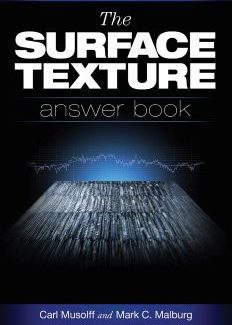Digital Metrology Solutions Offers New Book: “The Surface Texture Answer Book”
Written in Q-and-A style, the paperback book answers more than 100 commonly-asked questions regarding surface texture measurement, analysis, interpretation, specification, and application.
Posted: June 8, 2021
“Surface texture is more than just a number from a measurement device,” says Carl Musolff, the book’s co-author. “It’s a microscopic world with huge implications for many industries and applications. Our goal with this book is to help technicians and engineers quickly address their questions, regardless of their level of experience with surface analysis. But more than that, we want this book to be a learning resource that will benefit readers far beyond their immediate need.”
“Every day in my work, I answer questions like, ‘What is filtering?’ and ‘What is waviness?'” says Mark Malburg, the book’s other co-author. “These are important questions about measuring and specifying surfaces, most of which are not taught in schools. We found there was a real need for a resource to directly address these kinds of questions in a user-friendly, non-academic way. This book includes hundreds of figures to help make texture visual, which we’ve found is the best way to help readers grasp and retain these concepts.”
Musolff has more than 40 years of experience in product development, wear analysis, failure analysis, materials, metallurgical engineering, and surface texture analysis and specification.
Malburg is president of Digital Metrology Solutions Inc. (Columbus, IN). He has more than 30 years of experience in applied surface metrology and has consulted in numerous industries, ranging from optics to aerospace. Also, he participates in national and international standards committees and has helped shape many of the standards that govern surface specification and control.
“The Surface Texture Answer Book” consists of 400 pages and draws on information from numerous resources, as well as the authors’ combined 70 years of industry experience. Topics focus primarily on two-dimensional measurement techniques, which represent the vast majority of surface texture measurements in industry today. The book also touches on some important aspects of three-dimensional (areal) measurement, which is becoming more prevalent in development and industrial applications.
“We believe that this book clarifies a lot of the concepts, and misconceptions, relating to surface texture,” says Musolff. “We hope readers will be able to come to the book for a particular answer, then encounter other topics along the way that expand their knowledge as well.”















